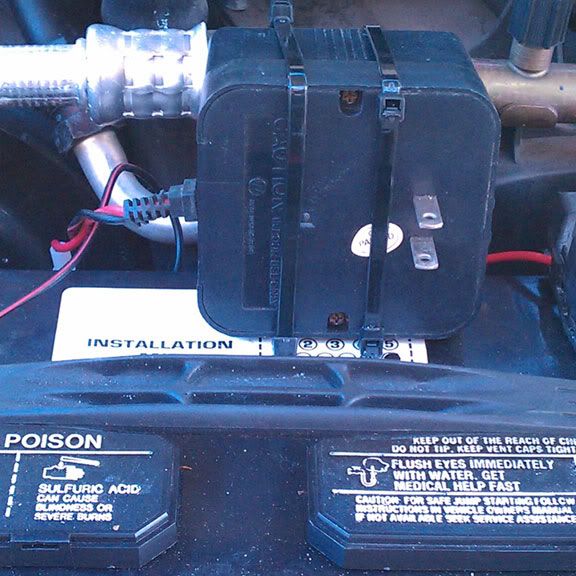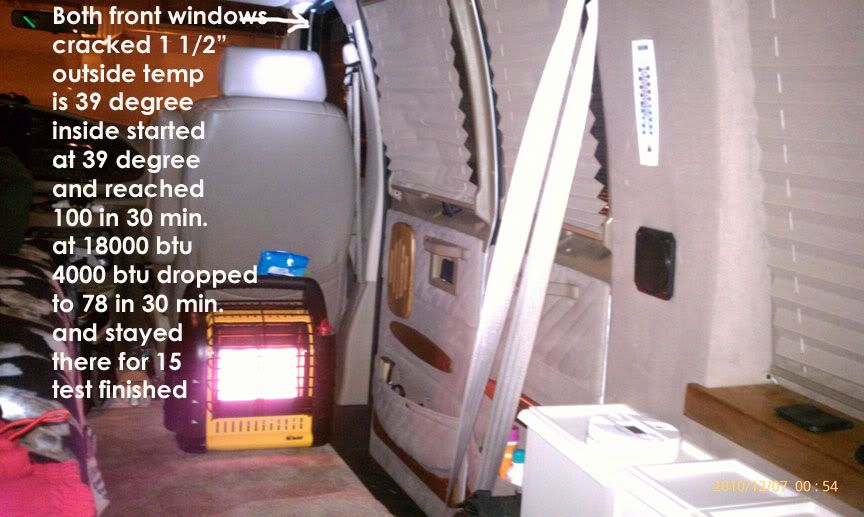stkshooter
Observer
sportsmobiles website talks about this info. too.
Q: For my short term camping use why not keep it simple ? add a 12v batt. in parallel connection to my main batt. and hook up cheap 2/8/12 amp charger to run off 110v gen. or shore power.
I would be paying $40 for new blem 105Ah deep cycle batt. or $30 for highest rated interstate megatron. I could use 2 of the same reg. batt. I have now in parallel. along with $34 110v charger. (I own 2/10/50 amp charger that still work fine from 20+ yr. ago ) I have a hard time spending over $100 on charger to maintain $30-40 batt. when the less expensive ones would seem to work when not charging off van alt.
Is there a reason the $34 charger at wal mart wont work for this set up ?
http://www.walmart.com/ip/Schumacher-SpeedCharge-12-Amp-Battery-Charger/13005744
Also, if I wire 2 batt. in parallel without silonoid. What would be the diff. ? I would just be adding more amp hours right ? so why change wiring and add solinoid / breakers ?
I am trying to keep this simple and not add any more weight / expense then needed.
I read if your not charging at higher than 10 amps you can hook charger straight to main batt. It is only when you charge over 10 amps that you need to hook charger on + on one batt. and - on other to balance charge.
With the smart chargers ability to regulate or be set to use say 8 amp or reduce down on its own from 12 to 8 amp, in prob. a pretty short time frame. I dont know that it would cause a problem or reduce batt. life. considering they prob. wont last longer than 4-5 yr. any way. And at $30-40 ea. would you really be better off spending $100+ on a charger to possibly get 1 more yr. out of a blem batt. if higher end chargers are in fact that much better or avg. out the over all cost and possibly buy 1 more batt. over the next 10-20 yr. then you might have with expensive charger. See where I'm going with this ? I may or may not spend more on batt. replacement in the end but if I spend 3-4 times as much on charger up front, that is a gauranteed expense.
Also the more connections, breakers, in line fuses you have the more items to go wrong, etc. If your just adding a batt. in parrellel you already have a fuse between van and batt. so what would be the worst that could happen ? You blow the main fuse ! A breaker would be better than buy fuses if you had a problem but you should not have a problem with this set up if your just adding more Ah.
The biggest expense this way is mounting hardware under van on frame rail. Anybody find mounting kits for ford van ?
Why I debate spending money on expensive chargers. I bought the top rated power supply unit for a computer I just built and spent months attempting to figure out little issues here and there. turned out it was the expensive power supply unit and I didnt know it until it went bad within 3 mo. of buying it. On top of that the 5 yr. warranty that is rated as best in the industry cost me another $20 to ship it back and since they take 3-4 wk. to send replacement I had to buy another PSU. I have many computers and in 20+ yr. this is the first PSU I have had fail and was the most expensive with the highest review rating. A cheap one has been going for over 10 yr. and still works fine in another computer. Just saying more is not always better and just because it cost more doesnt mean it works better. Some of this so called high tech stuff is no better. You charge a batt. at a lower amp rate and everything about that is better but we dont always have the time so we pump it up to 15 amp to get our quick fix but it doesnt last as long so we are back to charging again. fill it up drain it down. I could set a charger on 2 amp and let it go till it detected batt. was charged and a $300 charger would not perform that function any better. How about setting it on 8 amp and allowing the charger to determine when batt. is charged, then reduce to 2 amp setting off and on. Doesnt take a $300 charger to do that. Now if you want to charge many batt. seperate at the same time... but I wouldnt need that with 2 in parrellel. Any body using a vehicle for expedition wouldnt want 500 lb. of batt. loading it down so why would most use more than 2 in parrellel. Seems if you need more than that for expedition you may be better off with gen. because weight will always be the reason you cant justify more batt. for that type vehicle.
Thoughts ?
then use something like this to monitor voltage
Amazon.com: Equus 3721 Battery and Charging System Monitor: Automotive




I did find a cig. plug voltage reader with alarm for $30 Free S & H
http://www.voltminder.com/
http://www.batterystuff.com/battery-products/UPGvoltminder.html
Just ordered it.
Looks like the largest interstate deep cycle blem I can fit under hood is SRM-24 with 550 CCA / 690 MCA and a RC @ 25A of 140. I will parallel this with a SRM-27B 675CCA / 845 MCA and RC @ 25A of 180 which will give me 475 CCA more than I have now. The van factory batt. specs rated 550 CCA.
and when I just tested batt with load tester, it shows good.
http://shop.interstatebatteries.com...2147384803&Title=100+AMP+HANDHELD+LOAD+TESTER
Hope this helps some considering propane heaters for van.
